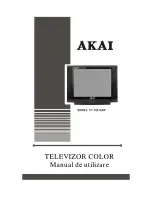
Introduction
1-3
DRS2000HS/DRS6000HS
User and Technical Manual
In a typical system, each antenna is connected to a separate
low-noise block downconverter (BDC) by a short cable or direct
N-Type connector. The converters output a UHF signal through
coaxial cable to UHF input ports at the rear of the receiver. The
receiver and downconverters may be separated by up to 600
feet (183 m), depending on frequency and cable type.
Incoming signals and downconverter power travel on the same
cable using BiasT interfaces in both the converter and the
receiver. The receiver samples the signal-to-noise ratio (SNR)
from all antennas, constructing an optimized signal from one or
more signals. High quality RG-6 or RG-11, 75-ohm coaxial cable
should be used to connect the receiver and downconverters.
The COFDM demodulator and SD MPEG decoder support
standard Digital Video Broadcast-Terrestrial (DVB-T) 2K
operation.
A typical configuration is shown in
Figure 1-2 on page 1-4
.
1.7
Features
The receiver offers the following features:
•
Two antenna inputs (DVB-T, DRS2000HS Receiver only)
•
Up to six antenna inputs (DVB-T, DRS6000HS Receiver
only)
•
Maximal ratio combining (MaxRC) diversity technology
•
Supports DVB-T demodulation technology
•
Front panel live video monitor
•
Real-time front panel monitoring for Signal-to-Noise
(SNR), Link Quality signal integrity (LQ), Receive Carrier
Level (RCL), and Bit Error Rate (BER)
•
Embedded real-time operating system accessible via
front panel control screen
•
Up to 50 programmable presets (saved settings) using the
receiver control panel
•
Rack Mountable, compact EIA 19-inch rack, 2 RU height
•
Supports 6, 7, and 8 MHz COFDM/DVB-T pedestals
•
Internal web server for remote management via a
networked computer
•
Band plans can be customized
•
Compatible with MRC and Link Research low-noise block
downconverters. See
“Block Downconverter Options” on
page 1-6
for options.
1.8
Hardware Components
A typical installation consists of a receiver, low-noise block
downconverters, filters, antennas, and cables.
1.8.1
Receiver
The DRS2000HS accepts 2 antenna inputs and the DRS6000HS
accepts 6 antenna inputs. Both receivers incorporate MaxRC
diversity technology, COFDM demodulation, SD MPEG
decoding, and DVB-T demodulation mode. With a front panel
video monitor and control screen, the receiver takes up only 2
RU of space in a 19-inch rack. The receiver can be operated
locally or remotely via a master controller.
The base model includes:
•
2- or 6-input receiver
•
MaxRC diversity
•
SD decoding.
Summary of Contents for DRS2000HS
Page 2: ......
Page 14: ...Introduction 1 8 DRS2000HS DRS6000HS User and Technical Manual...
Page 44: ...Troubleshooting 3 6 DRS2000HS DRS6000HS User and Technical Manual...
Page 58: ...Installation 4 14 DRS2000HS 6000HS User and Technical Manual...
Page 60: ...Replacement Parts and 5 2 DRS2000HS DRS6000HS User and Technical Manual...










































